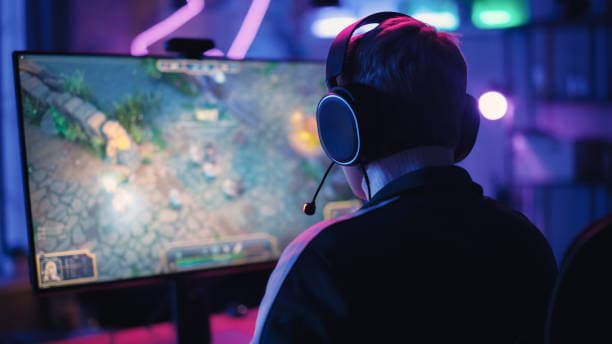In Dota 2, the carry is often referred to as position 1. This role is pivotal in shaping the team’s strategy and success, much like how american slots for UK players offer engaging and rewarding experiences tailored for the audience. The carry’s main task is to secure as much gold and experience as possible in the early and mid-game to dominate in the later stages. The effectiveness of a carry hinges on their ability to outscale the opponents through superior farm and itemization.
Choosing the Right Hero
Selecting the ideal carry hero is a tactical decision that can define the outcome of the game. The choice should be influenced by the overall team composition and the heroes picked by the opposition to ensure that the hero can thrive and scale effectively into the late game.
Assessing the Draft
The choice of a carry should always complement the team’s overall draft. Analyzing both the enemy’s lineup and your own team’s picks is crucial. For instance, if the team’s mid-laner is a hero like Templar Assassin or Huskar, who requires substantial farm, opting for a less farm-dependent, more aggressive carry can balance the team’s resource allocation.
Hero Synergy
The carry must synergize well with the team. For example, heroes like Primal Beast or Pangolier in the mid-lane who tend to roam and gank early pair well with a “greedy” carry who can use the space created to farm efficiently. On the other hand, if the mid-lane hero scales into the late game, such as Puck, the carry should be capable of early to mid-game impact to maintain balance.
Top Carries in Patch 7.35d
In the current meta of patch 7.35d, several heroes stand out:
- Sven: Known for his built-in cleave allowing efficient farm and solid early game presence.
- Luna: Offers fast farming capabilities and strong lane performance.
- Terrorblade: Enhanced in the latest patch, excellent in lane, and offers strong macro gameplay.
- Morphling: Tough to push out of lane and reaches his win condition reliably.
- Alchemist: Can recover well from a bad start by farming in the jungle, becoming a late-game powerhouse.
Itemization for Carries
Proper itemization is key to maximizing the effectiveness of a carry. Building the right items at the right time enhances a hero’s strengths and mitigates weaknesses, allowing them to fulfill their role in team fights and when farming.
Starting Items
For melee heroes, a common starting set includes three tangos, two branches, an axe, a Faerie Fire, and a stick. This setup leaves 45 gold, allowing for an early salve purchase if the lane proves challenging. Another universal setup includes a Circlet, a stick, a branch, three tangos, and an axe, which often leads to early Wraith Band or Bracer to enhance lane sustain.
Core Items
The item build should always adapt to the game’s flow. Essential items for carries usually include:
- Battle Fury: For heroes that need to scale with farm.
- Black King Bar (BKB): Crucial for surviving in team fights.
- Manta Style: Offers utility and farming speed.
- Aghanim’s Scepter: For specific heroes, enhances abilities significantly.
When to Build Specific Items
Deciding on item builds depends on the opponent’s lineup and the state of the game. For instance, if facing a team with high magic damage, BKB becomes essential early on. If the game demands high mobility or dispels, items like Manta Style or Diffusal Blade might be prioritized.
Laning and Farming Strategy
The early game laning phase sets the foundation for a carry’s success. A strong laning strategy involves understanding when to be aggressive and when to prioritize farming, ensuring the carry gains the necessary resources to impact the later stages of the game.
Winning the Lane
Effective laning is vital for a carry. Avoid unnecessary damage before reaching the lane and manage resources like health and mana carefully to stay in lane as long as possible. It’s also crucial to adapt the approach based on the opponent’s strength; if the lane is too challenging, consider retreating to the jungle to secure farm without risking deaths.
When to Leave the Lane
Transiting to the jungle is a decision based on several factors:
- The strength and aggression of the enemy offlaner.
- The availability of farm in the jungle.
- The pressure applied by your team elsewhere on the map.
Farming Patterns
Efficient farming is essential. Carries should aim to push out lanes safely, then retreat to the jungle to maximize gold and experience gain. Knowing when and where to farm can drastically affect the carry’s impact—balancing lane pressure with jungle farming optimizes resource acquisition and prepares the carry for mid to late-game engagements.

Engaging in Fights
Knowing when and how to engage in fights is crucial for a carry. The carry must assess the risk and reward of entering skirmishes, focusing on maximizing damage output while minimizing the chances of getting picked off early in engagements.
Timing Your Entry
Carries should not initiate fights but rather enter after the frontline heroes. This strategy prevents premature focus from the enemy and allows the carry to deal damage effectively. The target priority is crucial; deciding whether to focus on enemy supports or the core can dictate the fight’s outcome.
Fight Participation
Choosing when to join a fight is as critical as the fight itself. A carry needs to gauge whether their presence can turn the tide of the battle or if it’s better to continue farming. Engaging without the necessary items or backup often leads to detrimental outcomes.
Conclusion
Mastering the role of a carry in Dota 2 requires a deep understanding of hero selection, itemization, laning tactics, and engagement strategies. Success hinges on making informed decisions that not only consider the current game state but also anticipate future developments. By continuously adapting to the dynamic environment of each match, a skilled carry can lead their team to victory.
